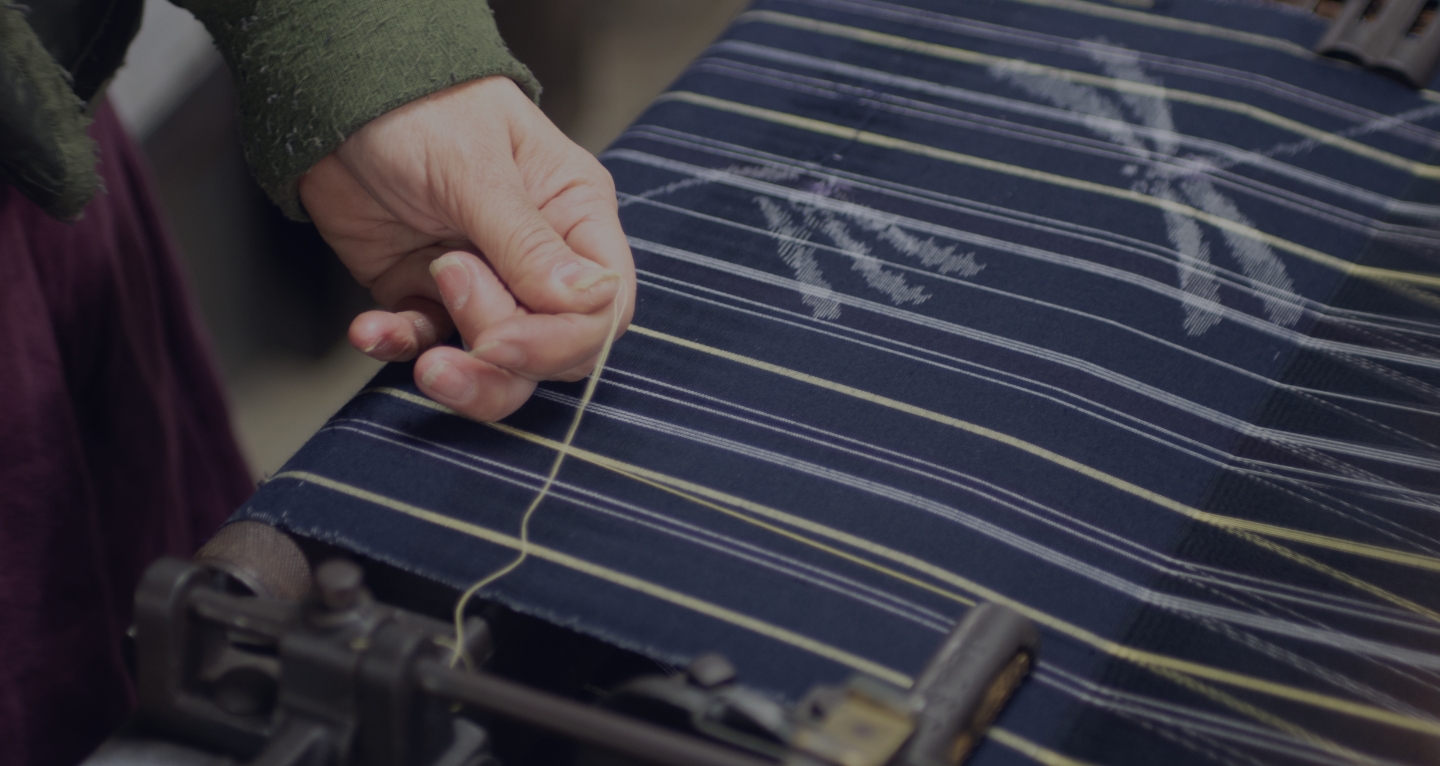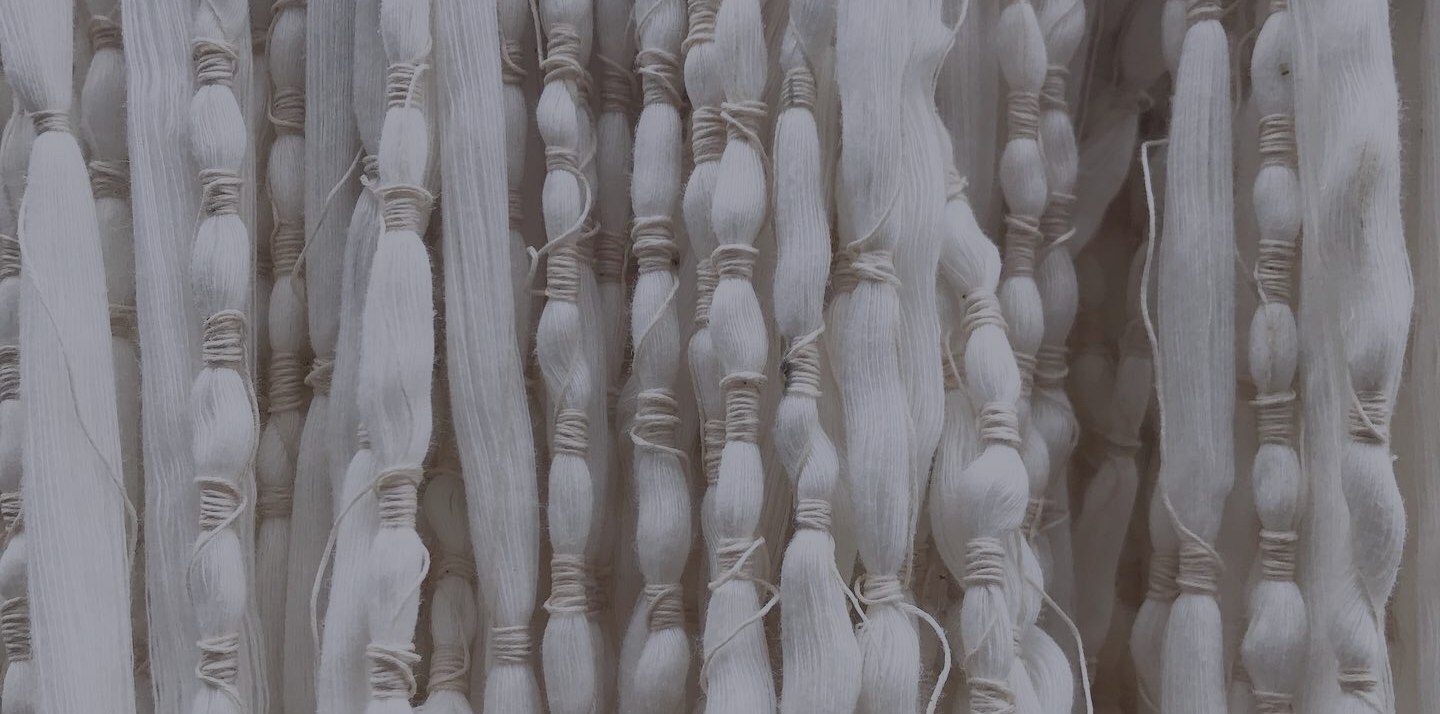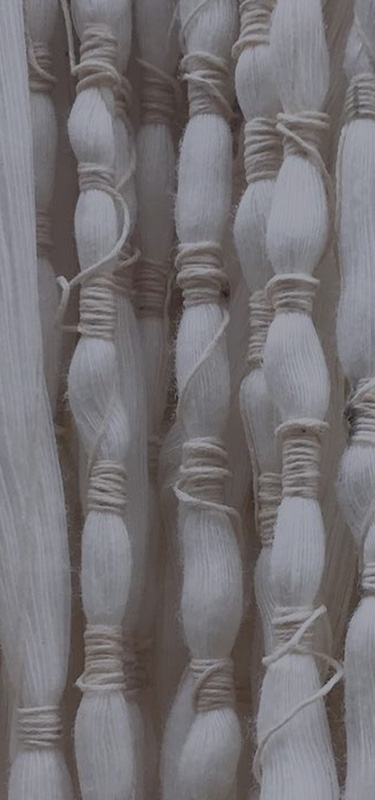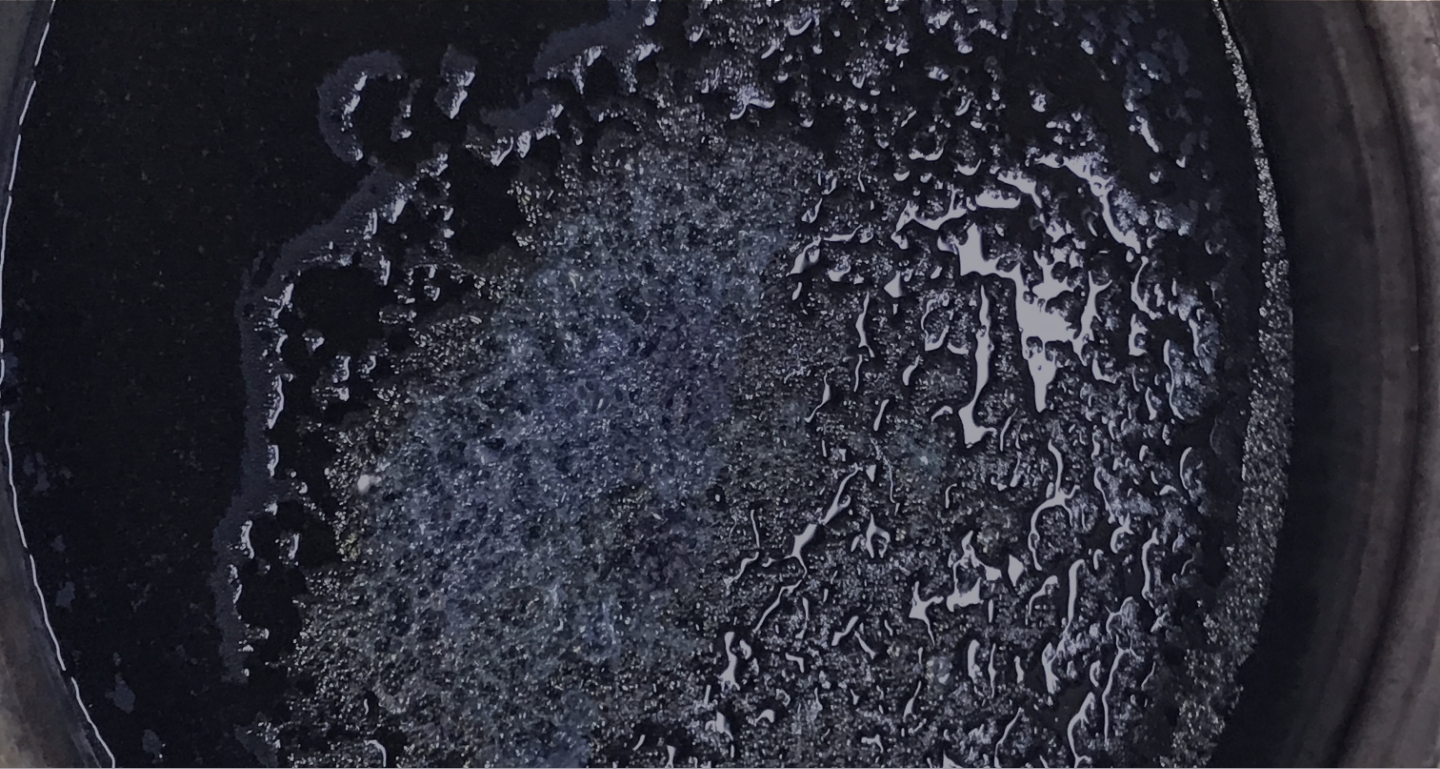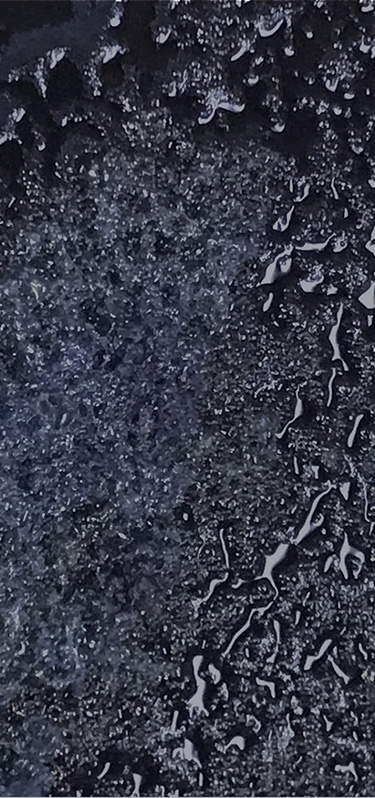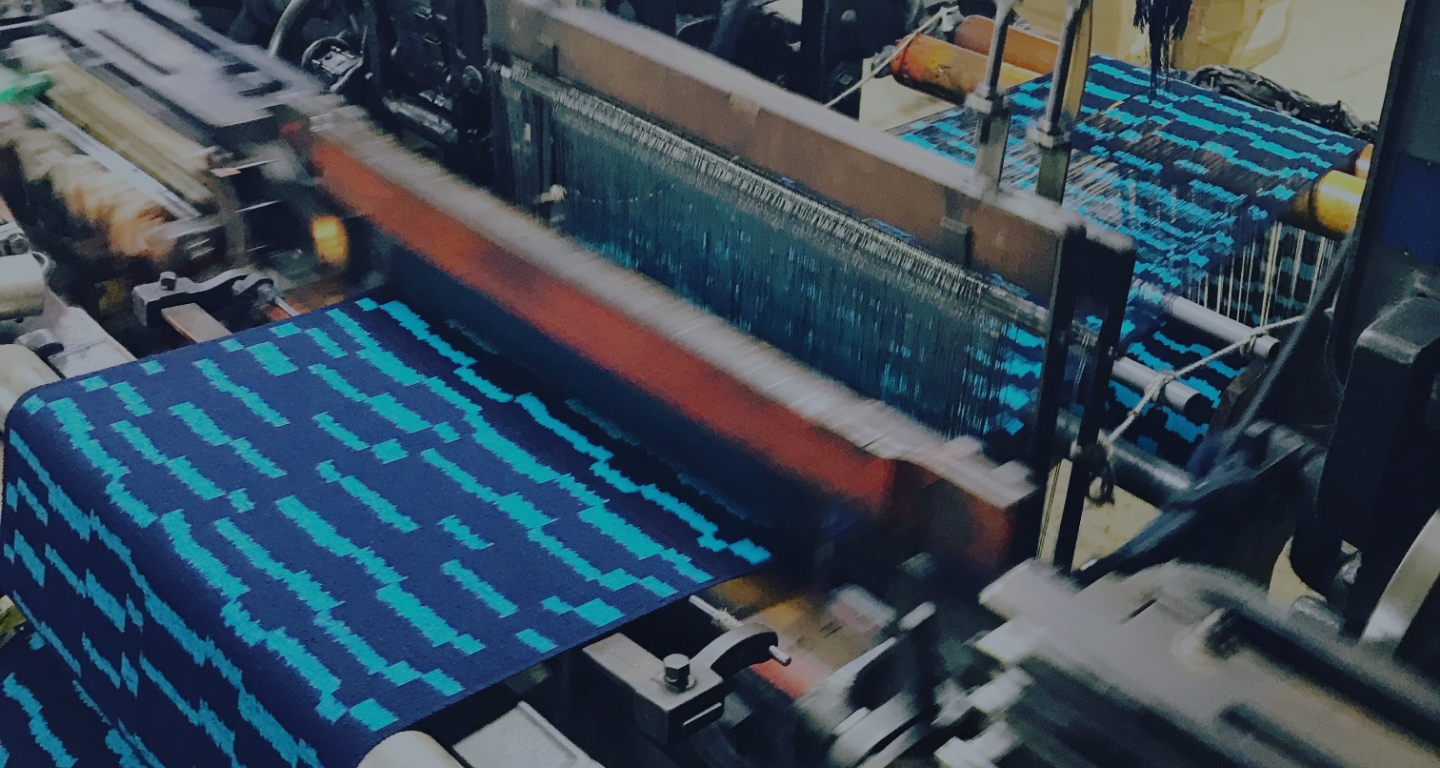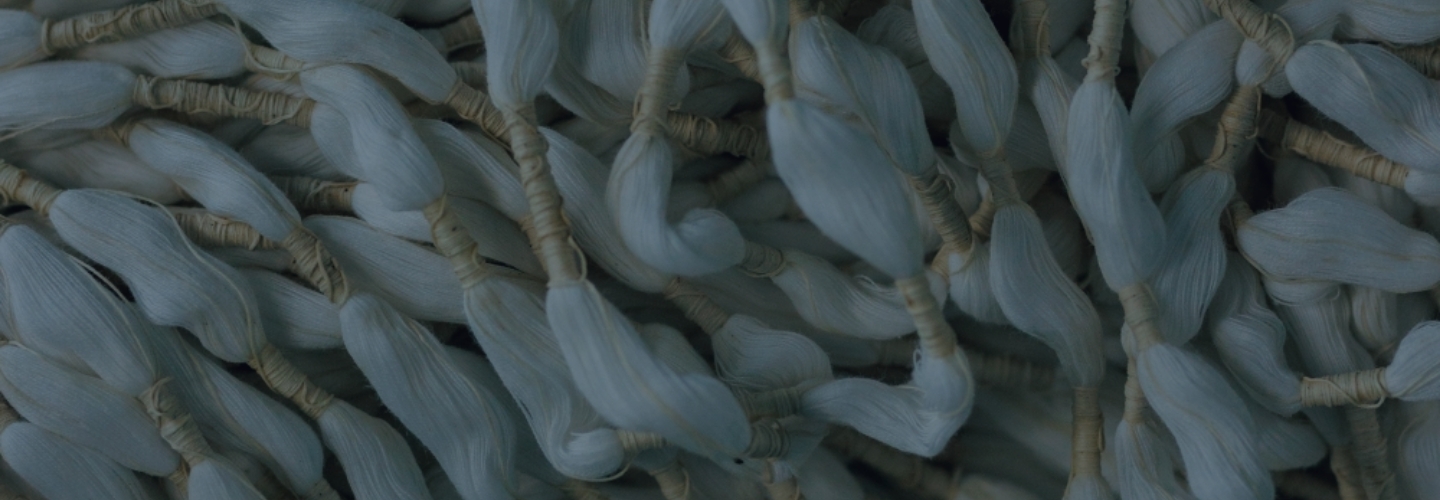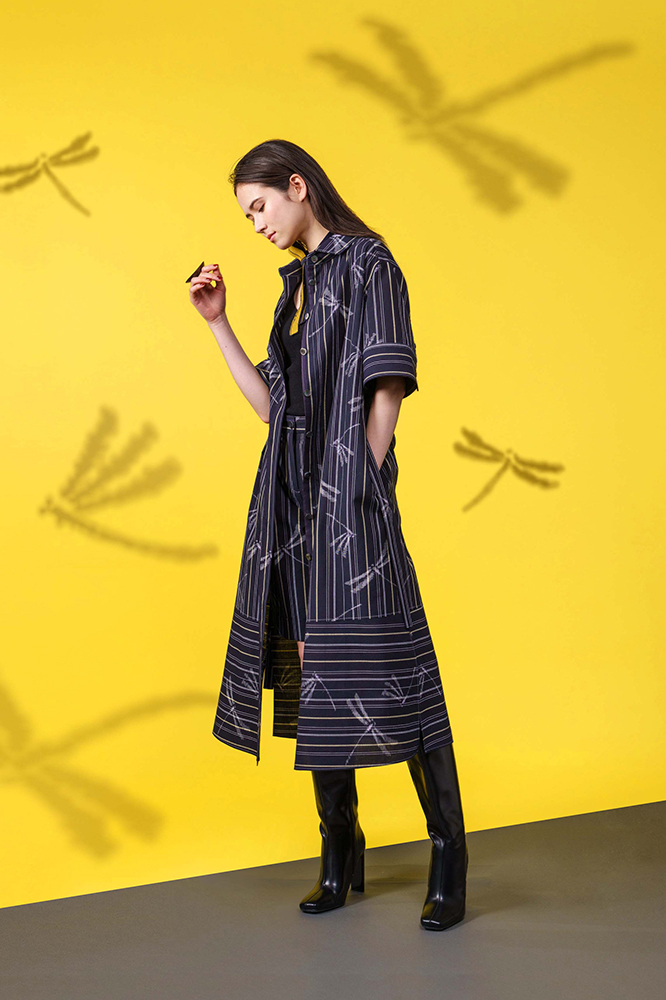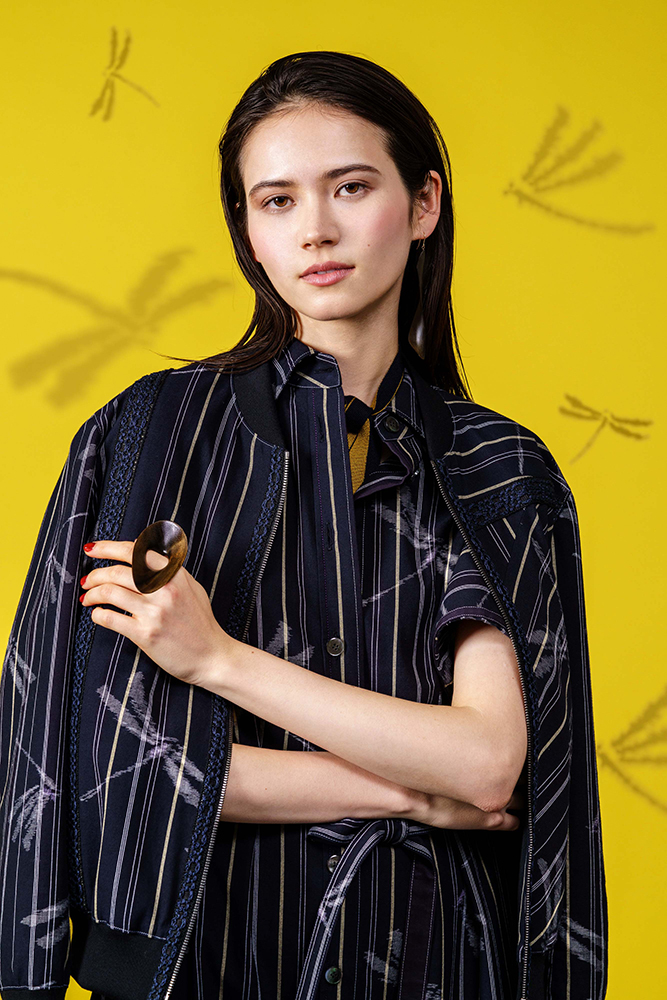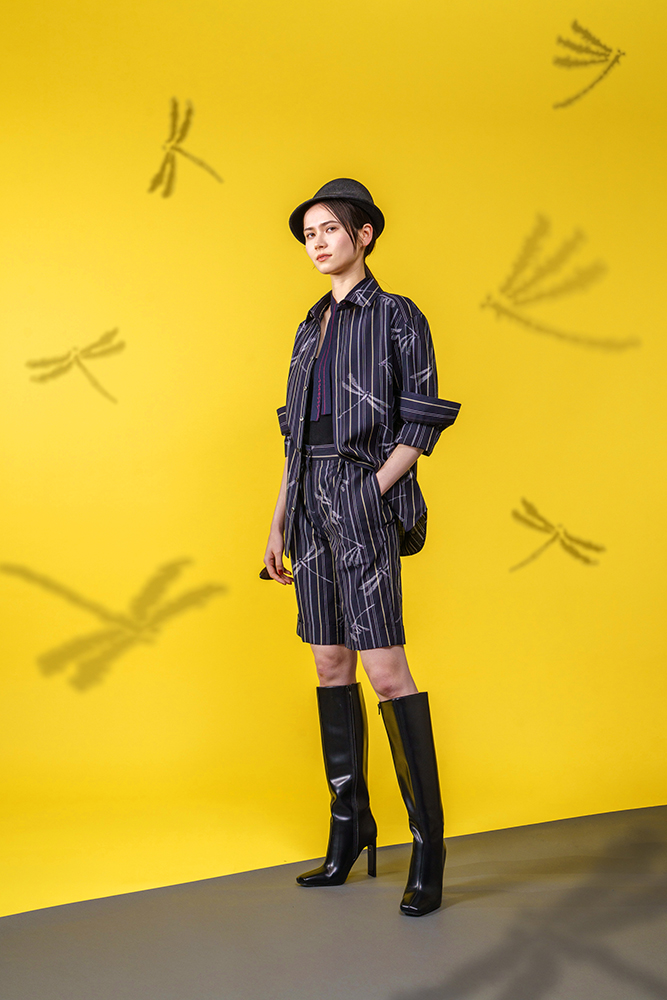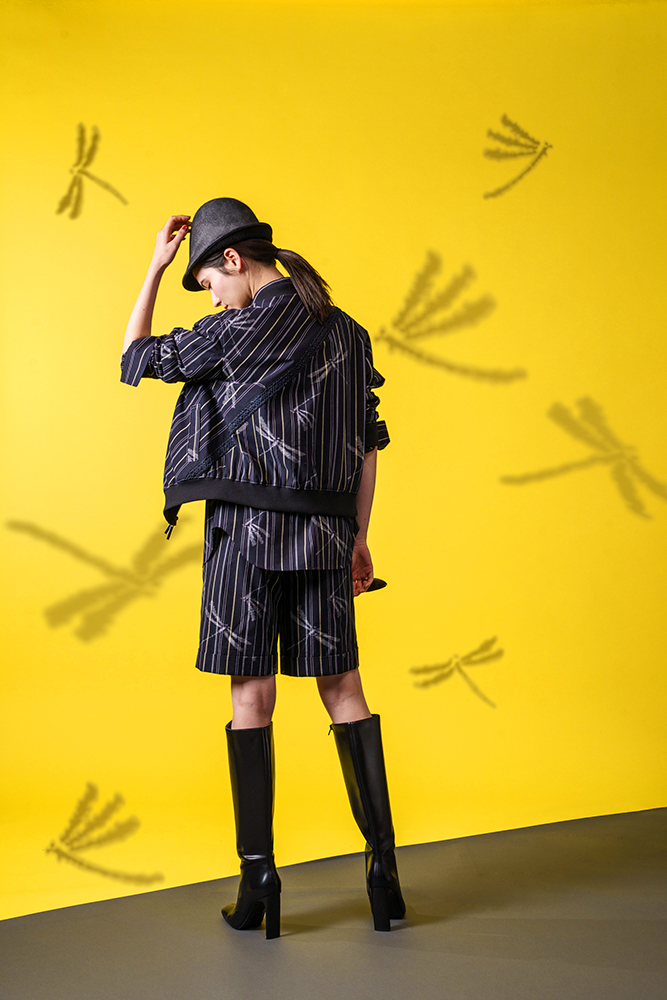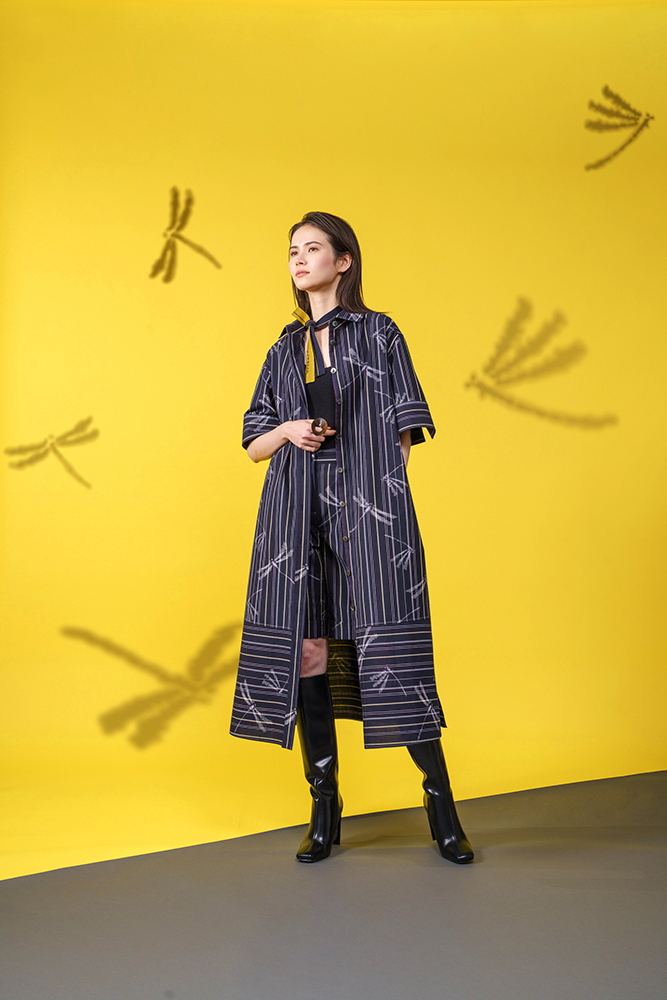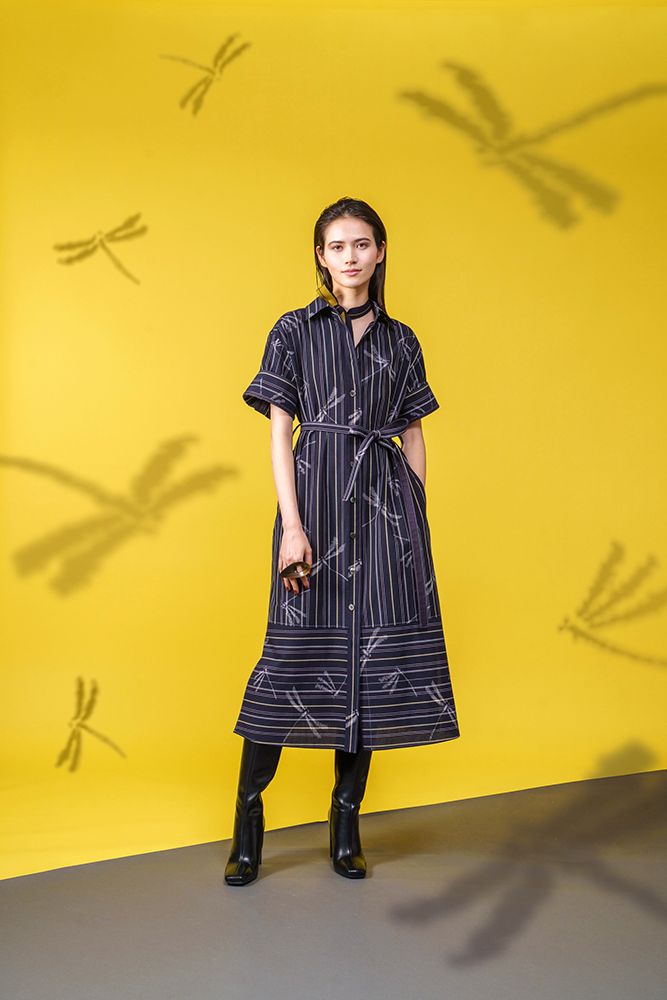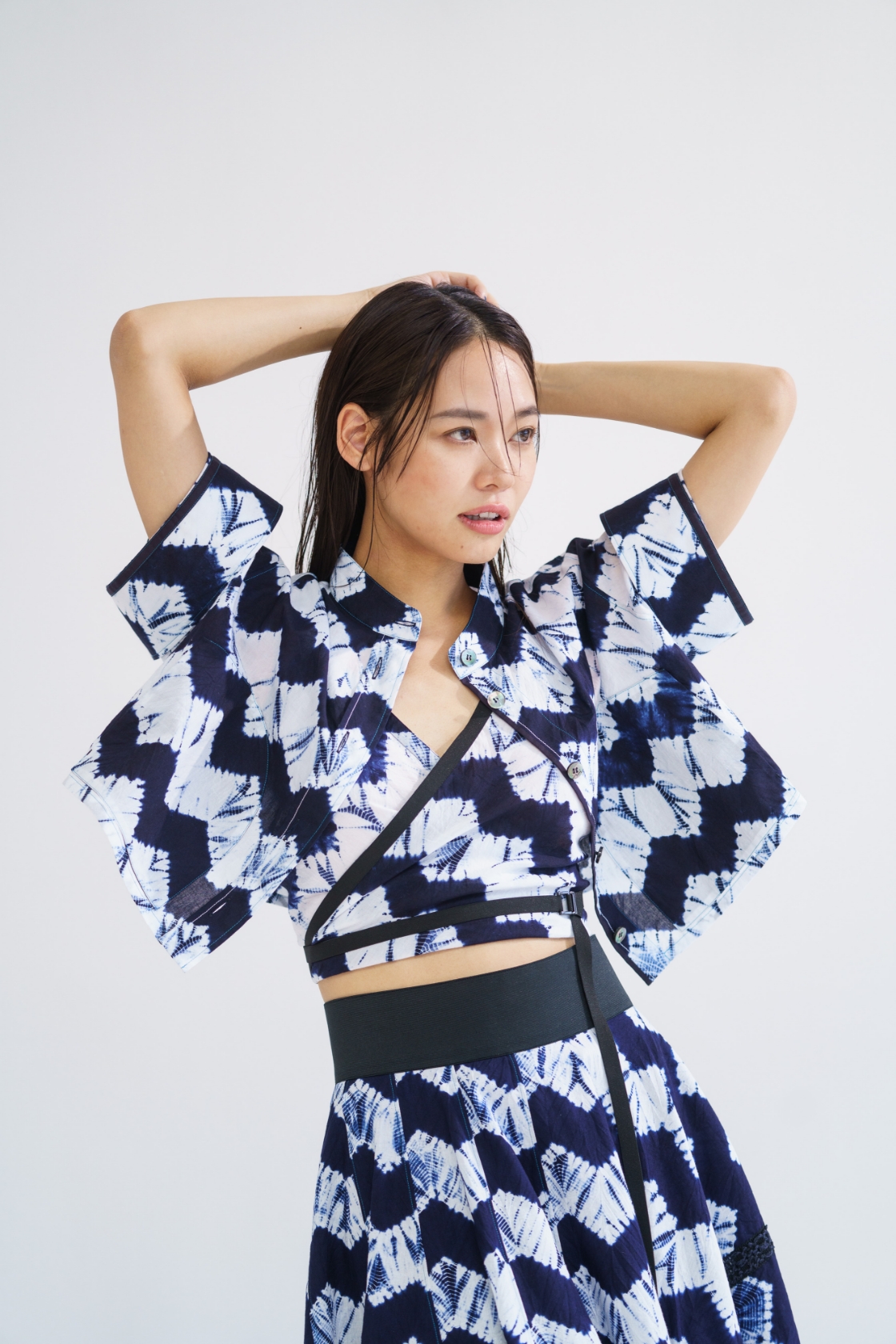KURUME KASURI
FUKUOKA PREF.
Connecting Tradition to Modernity with Free-Form Patterns and Comfortable Texture
Kurume Kasuri, a cotton textile produced throughout the Chikugo region in the southern part of Fukuoka Prefecture,
is said to have been named for the blurred patterns that emerge when woven.
Using a technique called 'Tying', cotton yarn bundles are dyed after being tied according to the pattern.
When these dyed bundles are untied, the pattern appears on the yarn. By weaving with these pre-dyed threads,
subtle misalignments create unique blurred patterns.
Both traditional hand-weaving artisans and those who adopt machinery as needed exist,
producing textiles without losing the traditional expressions and offering a wide variety of colors and patterns.
These fabrics blend well with Western-style clothing, allowing contemporary users to intimately experience the unique qualities of Kasur.

Tying
This process involves tying parts of the yarn to resist dyeing to create the pattern.
There are two types of tying in Kurume Kasuri: "Hand Tying", where warp and weft threads are tightly tied with a kind of hemp called Araso after soaking in water,
and "Machine Tying", where the areas for the Kasuri pattern (white parts) are alternately rotated right and left and then tied.
Each artisan's touch adds a unique character to the Kasuri patterns.
Dyeing
The yarn bundles are arranged in a ring shape for easy dyeing, a process called "Kaseage",
or Hanking Up. After Kaseage, the yarn is dyed with great care to prevent uneven coloring.
Once the threads are untied, the dyed and undyed white areas (Kasuri part) become visible.
Weaving(Handweaving/ Machine Weaving)
Artisans continue traditional handweaving, and some incorporate machinery as needed,
producing textiles without losing the original look and offering a wide variety of colors and patterns. In machine weaving,
even though power-assisted, constant checking is required to ensure the alignment of warp and weft patterns,
making it a time-consuming process. The texture and ease of handling of the cotton fabric make it well-suited for Western clothing,
allowing contemporary users to intimately experience the unique qualities of Kasuri.

